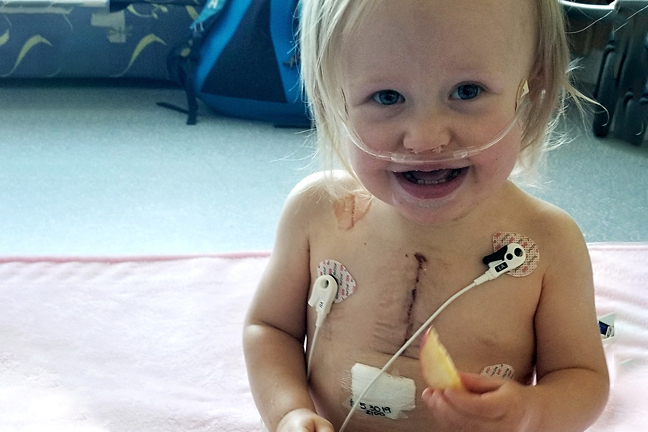
When young doctor Richard DeWall was busy building the first device to keep air bubbles out of the bloodstream during heart surgery, he couldn’t have guessed that a mechanical descendent of his invention would help a toddler in his own family through an operation.
A game-changer for cardiovascular surgery, DeWall’s bubble oxygenator prevented air bubbles from traveling to the brain during surgery and causing a stroke. It was first used on a patient in 1955, when DeWall was a newly minted M.D. working under famed U of M surgeon C. Walton Lillehei.
Fifty-nine years later, in May 2019, doctors hooked up DeWall’s great-grandniece Sylvie Hogan, age 16 months, to a modern heart-lung machine and closed a channel that was causing a leak in her aorta. The extremely rare defect, called an aorto-left ventricular tunnel, was discovered after Sylvie’s pediatrician detected a heart murmur during a well-baby exam.
Maybe Sylvie herself had an inkling that something was up last year, when she and her mother, aunt, and cousin viewed her great-granduncle’s invention in the Smithsonian Institution.
“It’s such an ironic, fun picture, to see the three of them looking at the camera, and there’s little Sylvie staring at the machine,” says Sylvie’s grandfather and UMN alum Jim DeWall. “Just the fact that she’s looking at it, and one year later, modifications of that machine allowed for her surgery, as it has for millions of other people in the world. What a happy story.”

